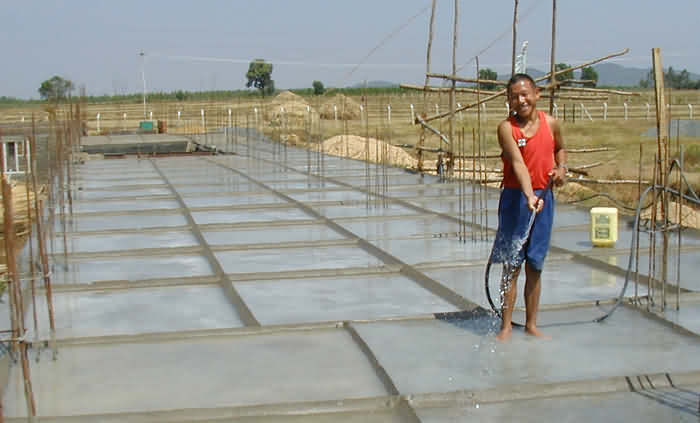What causes cracking in new concrete? And how do you prevent these cracks? Following these 3 simple tips when Curing concrete correctly while it is fresh can save you a lot of trouble later. And the good news is that just covering it with a sheet of plastic can help immensely.
You have possibly seen people cover newly done concrete work with plastic while it is curing. They do this so that dirt does not blow onto the concrete during the curing period? While it is spot-on that covering the curing concrete with plastic will keep it cleaner, there is a more important reason behind this practice: It is better to take a little time now to become familiar with this subject than to make big mistakes — perhaps even irreparable mistakes — later on, when you are right in the middle of working with concrete, mortar, etc.
-
Place a plastic sheet cover on the concrete
Remember, you mix water into concrete to stimulate the cement binding agent within. As the mix dries, it will harden. But the drying, or “curing” should be steady, otherwise cracking may occur. To prevent cracking, plastic is placed over the curing concrete to trap the water inside, guaranteeing gradual curing.
2. Mist the concrete
Another of the tips when curing concrete is that you can also mist the concrete occasionally with a spray bottle to prevent it from drying too rapidly.
3. Place control joints in the concrete
How much time does it take concrete to fully cure? There is a mechanical answer and a practical answer. The technical answer is 28 days. There is one more step to take to help the concrete cure. Have you ever heard of a “control joint?”
Control joints are grooves inserted into a concrete surface to “control” cracking. Fundamentally, this groove is a deliberate, controlled crack inserted to prevent the concrete’s cracking on its own, in an unrestrained manner. By placing control joints in it before it cures, any stress the concrete will be subjected to consequently will not produce haphazard cracks that will be a landscaping eyesore.
Using a trowel or jointer, cut an even control joint that will be visually pleasing. Control joints can also be cut into existing concrete surfaces using a saw with a masonry blade attached.

